Starting from scratch, we would like to build, test and iterate on a basic proof of concept (PoC) to test product user flow, user pain points, product requirements, educator’s interest and most importantly, the messaging and design strategies with 1000 existed users. The proof of concept should successfully stir our users’ interest to accept the invitation, to trust it as a legit program, understand what need to do to participate, and to upload their resources with Course Hero.
Success metrics for PoC is over 20% of the user act on the full journey (opt-in program to upload).
User testing on email behavior and trust: We tested the subject line in email, eduactor email opening behaviors to sort out the reach out strategy.

With two UX goals in mind: A. Users trust this as a legit program. B. Users are guided with clear steps to take action: provide a paypal account and claim revenue. We started with two assumptive designs: 1. Providing context about Educator Exchange program and strengthening the relationship between our user and Course Hero in the past, then guiding them to the (most important) opt-in step. And 2. Guide the user to the opt-in action and expectation of future earnings.
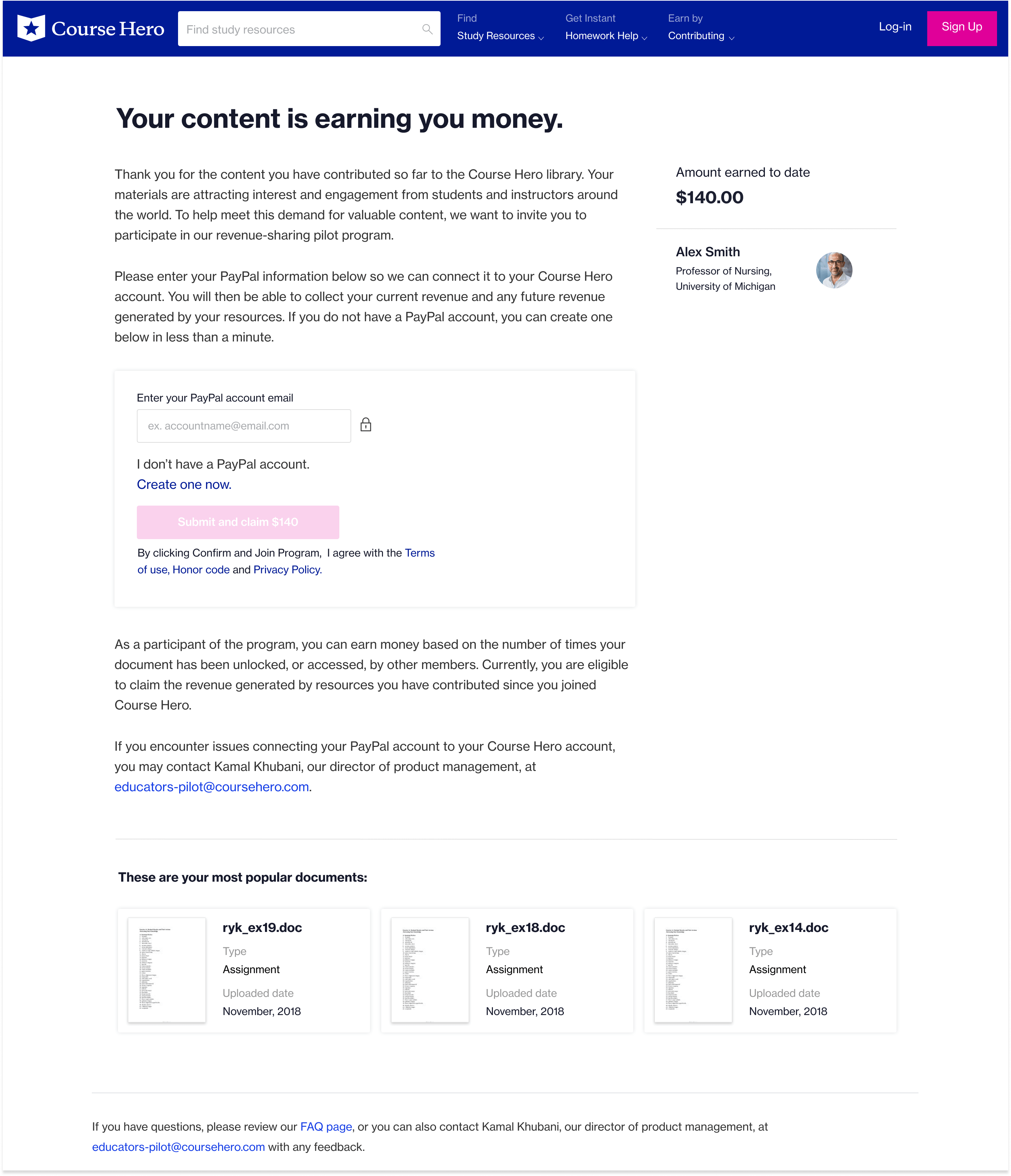
Variation 1: In-product experience
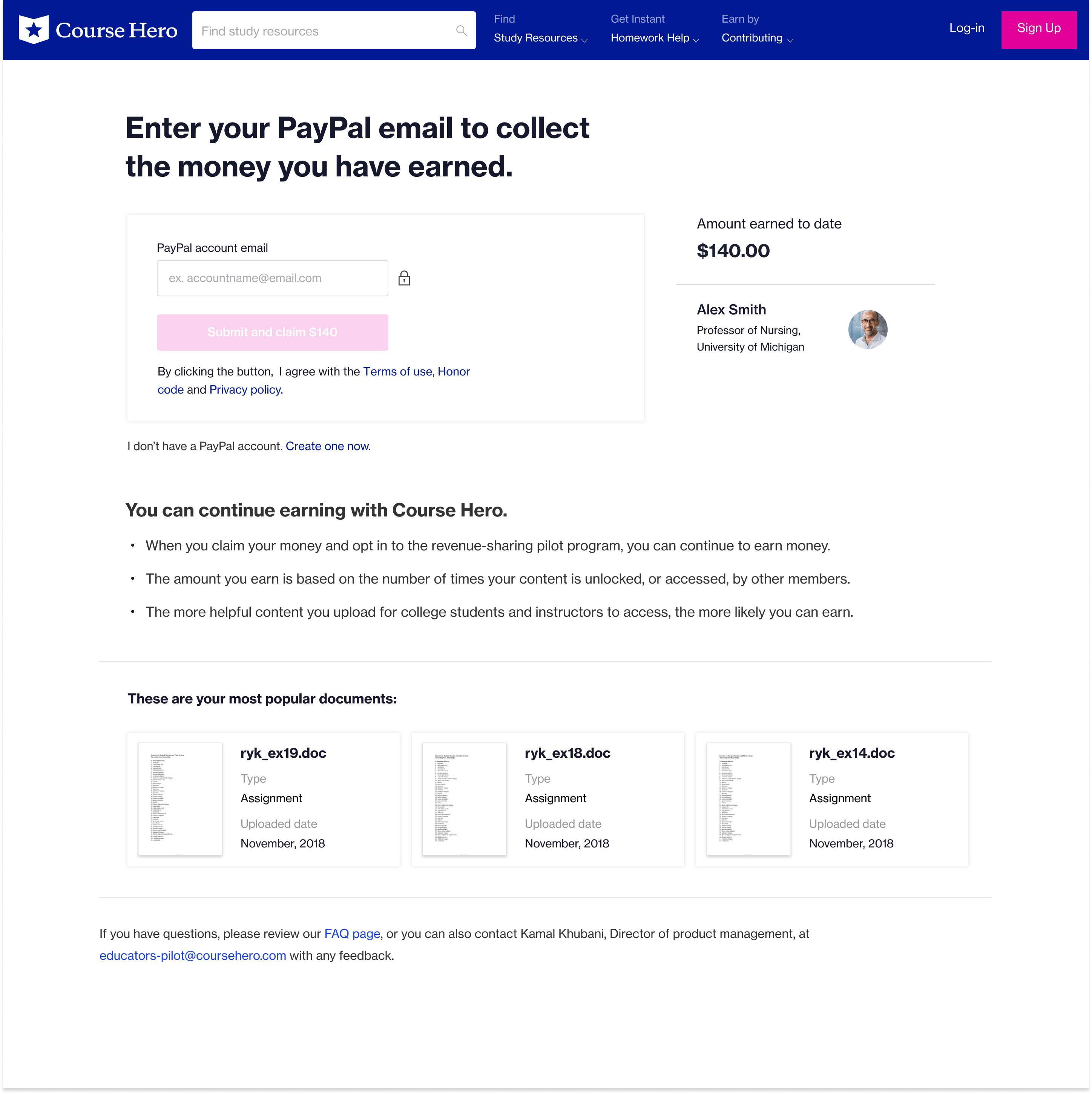
Variation 2: In-product experience
We started with a design focusing on two main messagings: that your funds is on the way to the PayPal account, and that you could start uploading for revenue earnings.
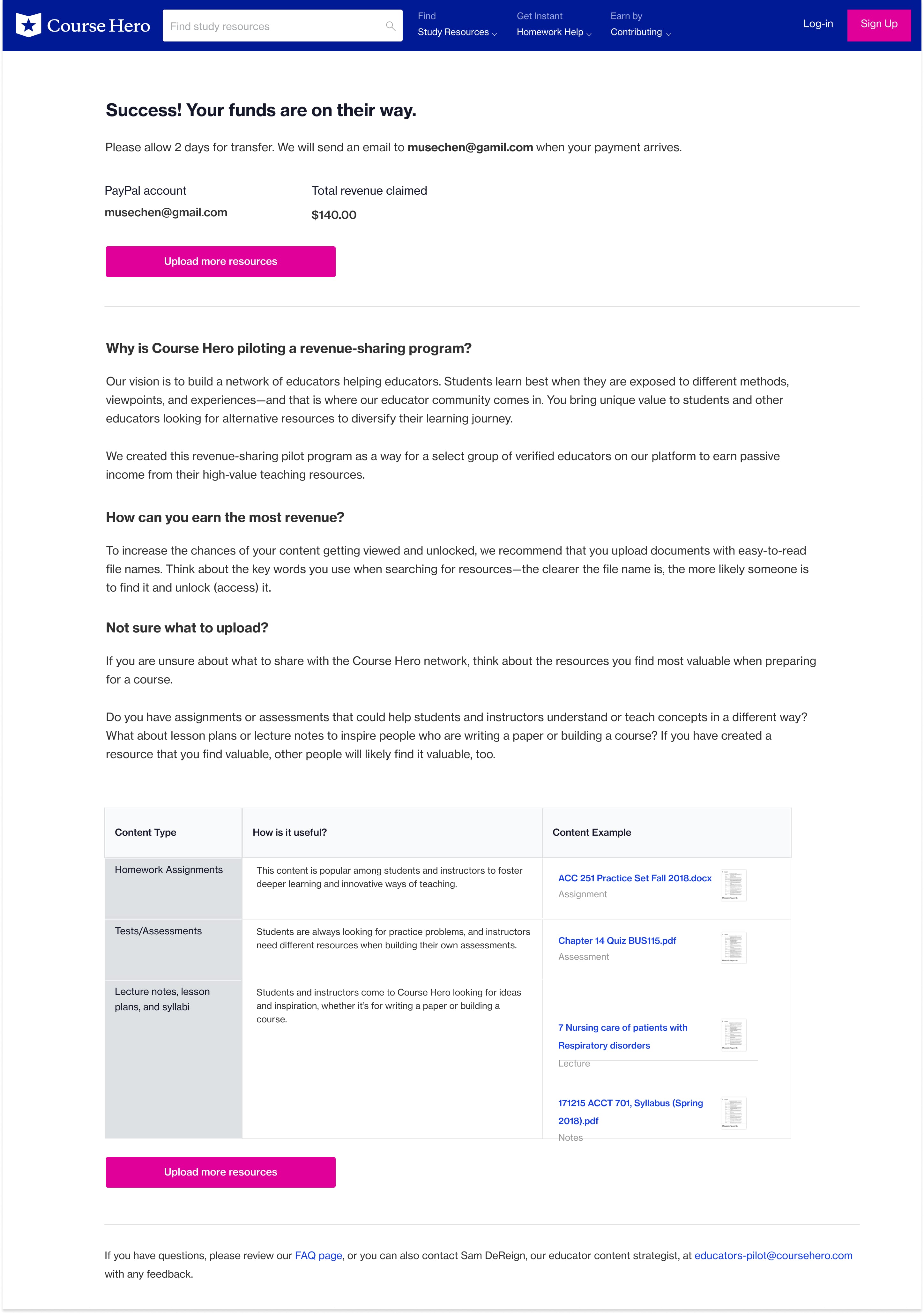
You successfully opt in! Now start to upload.
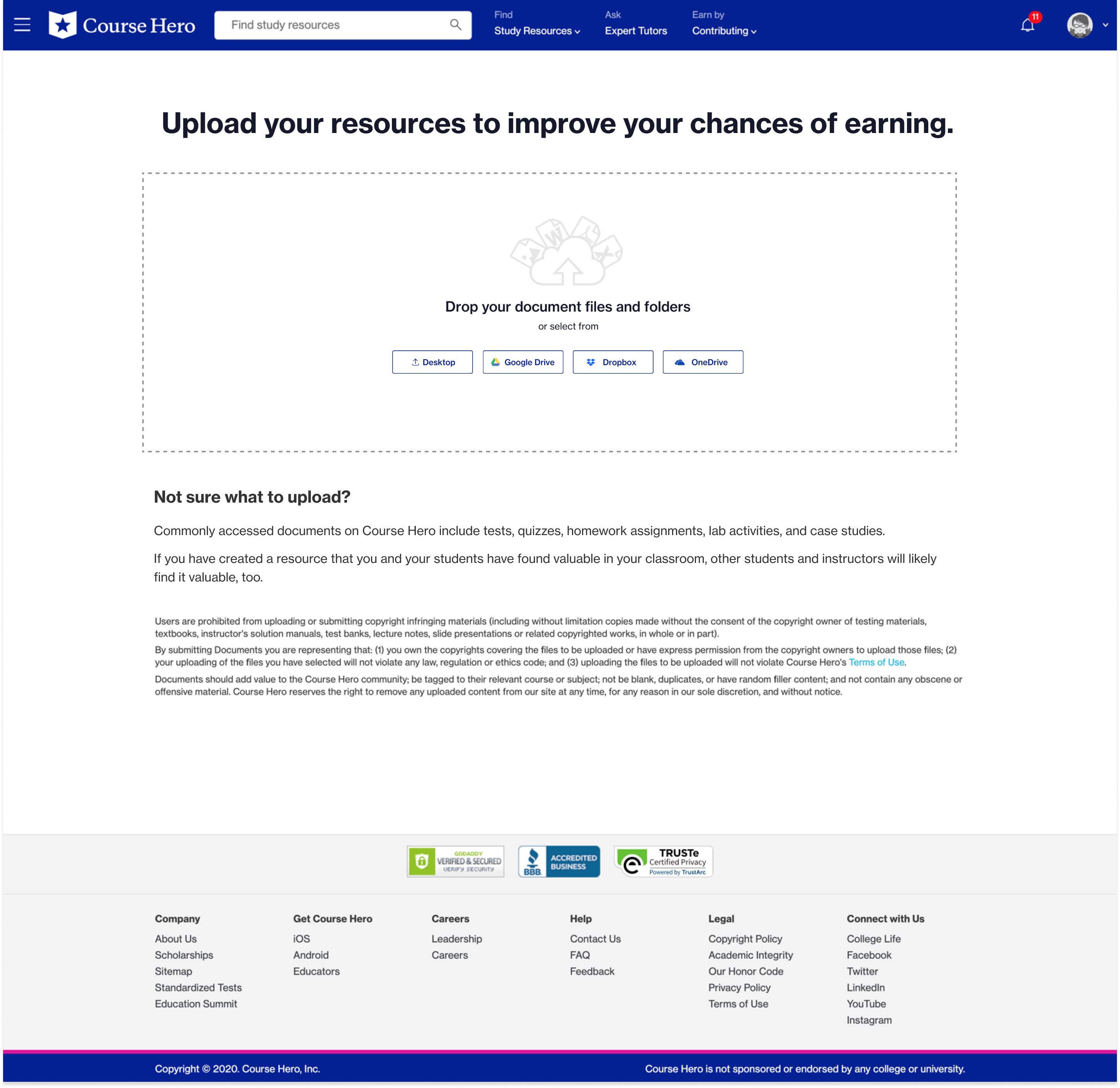
Start to upload.
We tested with 5 educator users. Using the user interview and concept test methodology to walk through prototypes of our emails in their inbox, the emails themselves, and the subsequent in product flow. It shows that the prototype had strong usability, just low trust. Users could intepret this as a spam.
Insight 1
Educator interviewees mentioned they would be comfortable adding the PayPal email “on their account on Course Hero” but not from “the link from the email because that could be a scam”.
Insight 2
Most educators expressed concerns of giving their PayPal information to us. They refered it as their “private financial data”.
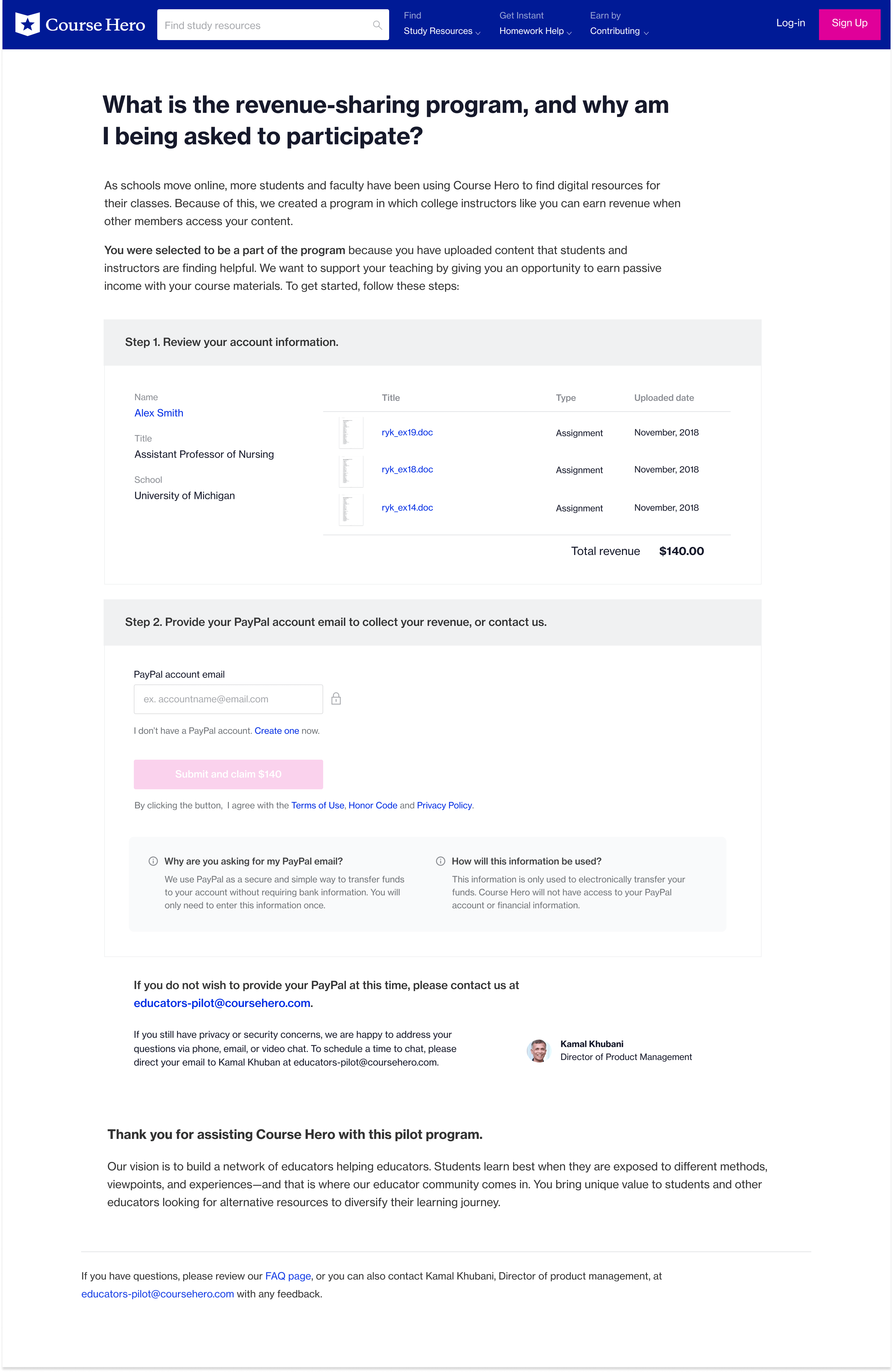
Final Design: In-product experience
Solution 1
Guiding users to their dashboard where they could easily access information and context is not a feasible solution so we tried to induce the page with trust and clarity.
A step-by-step story-telling structure is proposed as a preparation for users to “get started”. Providing contents and account information as context, users understand their relationship with us (to compensate the lack of a dashboard), their contents are recognized by a community (understand the model), and that their efforts had earned them passive income (understand the value).
Solution 2
Be upfront that their “private information” is used with security, clarify why PayPal is being asked as the main way to collect earning, and provide a alternative so we could test their preference rather than their willingness of providing a PayPal account.
Insight 1
The attention in the page is directed to “funds being received” rather than uploading. It takes mental efforts to switch context to “what they are suggested to do next”.
Insight 2
The “not sure what to upload” section led to increased comprehension of the RevShare program overall. And reduce the barrier for the steps to take forward.
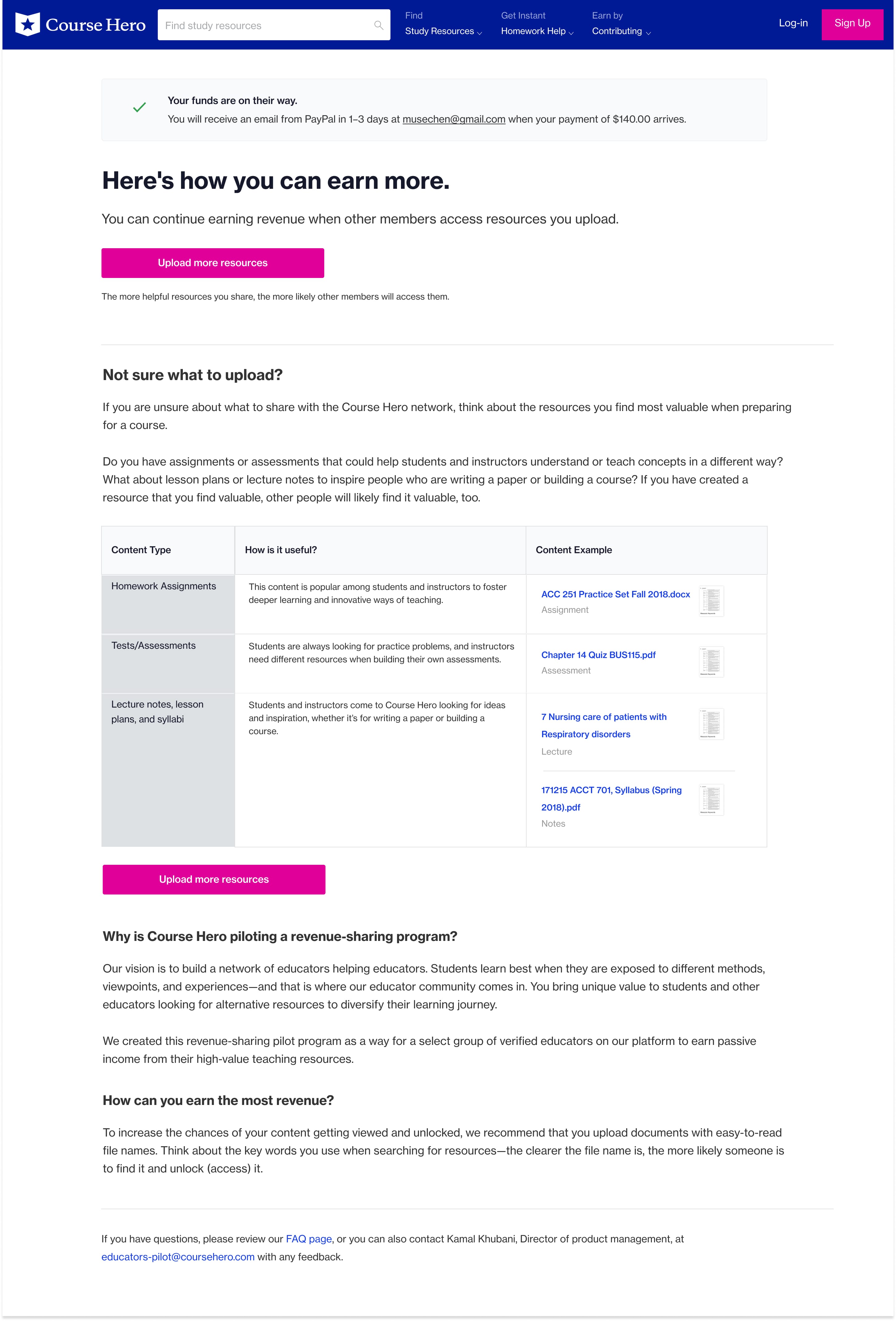
Final Design: You successfully opt in! now start to upload.
Solution 1
Tie the title with the action, and separate the “success” message with those context.
Solution 2
Include the details that clarify the main question with our users earlier in the flow to increase comprehension.
The result of PoC had a 28% opt-in rate (8%+ than expected success metrics: 20% opt-in rate), 11 uploads per user, and a 70% of the email open rate. It was testified as a valid idea that’d achieve business goal as well as user needs.
June, 2020, we decided to move forward. The learnings, insights and core design concept of the PoC are introduced into MVP product experience which I continue to lead the design and research efforts on.
From scratch to launch is a journey where one needs to be resilient so a design strategy could be employed by iterating and rethinking quickly to align closely to the business impact.
Executing a well stakeholder-management and staying very focused on follow-through as long as the project is demonstrating traction in business impact/customer value become essential to the success of the PoC project. Communicating with researcher, PM, engineer, marketing team in their “languages” lead to a much complete design journey - afterall, the experience of an user is the sum of efforts in different teams as well as how each is connecting carefully with one another.
Coded and designed by Muse, Copyright © 2021